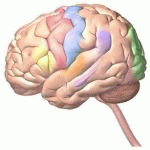Neurology
|
21 september 2014 05:52:18 |
| The impact of single and pairwise Toll-like receptor activation on neuroinflammation and neurodegeneration (Journal of Neuroinflammation) |
|
Tweet Background:
Toll-like receptors (TLRs) enable innate immune cells to respond to pathogen- and host-derived molecules. The central nervous system (CNS) exhibits most of the TLRs identified with predominant expression in microglia, the major immune cells of the brain. Although individual TLRs have been shown to contribute to CNS disorders, the consequences of multiple activated TLRs on the brain are unclear. We therefore systematically investigated and compared the impact of sole and pairwise TLR activation on CNS inflammation and injury.
Methods:
Selected TLRs expressed in microglia and neurons were stimulated with their specific TLR ligands in varying combinations. Cell cultures were then analyzed by immunocytochemistry, FlowCytomix, and ELISA. To determine neuronal injury and neuroinflammation in vivo, C57BL/6J mice were injected intrathecally with TLR agonists. Subsequently, brain sections were analyzed by quantitative real-time PCR and immunohistochemistry.
Results:
Simultaneous stimulation of TLR4 plus TLR2, TLR4 plus TLR9, and TLR2 plus TLR9 in microglia by their respective specific ligands results in an increased inflammatory response compared to activation of the respective single TLR in vitro. In contrast, additional activation of TLR7 suppresses the inflammatory response mediated by the respective ligands for TLR2, TLR4, or TLR9 up to 24 h, indicating that specific combinations of activated TLRs individually modulate the inflammatory response. Accordingly, the composition of the inflammatory response pattern generated by microglia varies depending on the identity and combination of the activated TLRs engaged. Likewise, neuronal injury occurs in response to activation of only selected TLRs and TLR combinations in vitro. Activation of TLR2, TLR4, TLR7, and TLR9 in the brain by intrathecal injection of the respective TLR ligand into C57BL/6J mice leads to specific expression patterns of distinct TLR mRNAs in the brain and causes influx of leukocytes and inflammatory mediators into the cerebrospinal fluid to a variable extent. Also, the intensity of the inflammatory response and neurodegenerative effects differs according to the respective activated TLR and TLR combinations used in vivo.
Conclusions:
Sole and pairwise activation of TLRs modifies the pattern and extent of inflammation and neurodegeneration in the CNS, thereby enabling innate immunity to take account of the CNS diseases? diversity. |
| 102 viewsCategory: Neurology |
 An animal study to examine the effects of the bilateral, epidural cortical stimulation on the progression of amyotrophic lateral sclerosis (Journal of NeuroEngineering and Rehabilitation) An animal study to examine the effects of the bilateral, epidural cortical stimulation on the progression of amyotrophic lateral sclerosis (Journal of NeuroEngineering and Rehabilitation)Microparticles in multiple sclerosis and clinically isolated syndrome: effect on endothelial barrier function (BMC Neuroscience) 
|
| blog comments powered by Disqus |
MyJournals.org
The latest issues of all your favorite science journals on one page
The latest issues of all your favorite science journals on one page



